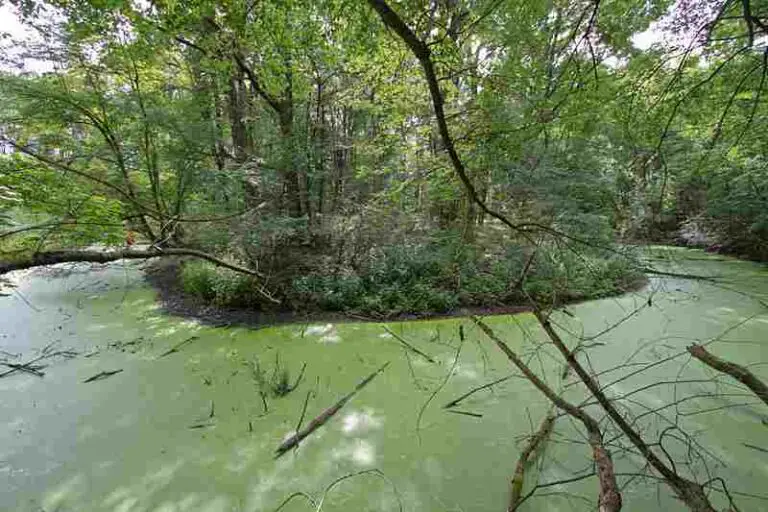Carbon Sequestration Meaning and Principle Explained
Carbon sequestration act and process of capturing, removing, and storing carbon dioxide away from the atmosphere for a relatively-long period of time. This article discusses carbon sequestration meaning, principle and examples, as follows;
-Carbon Sequestration Meaning: 5 Ways to Define Carbon Sequestration
-Carbon Sequestration Working Principle
Carbon Sequestration Meaning: 5 Ways to Define Carbon Sequestration
Carbon sequestration is the process by which atmospheric carbon; either in its gaseous form, or as a component of biomass, is stored and kept away from the atmosphere.
Both natural and artificial systems as well as processes, are involved in carbon sequestration [4]. These can be broadly referred to as carbon sinks; and they work alongside carbon sources to control the dynamics and recycling of carbon in the ecosystem.
An alternative carbon sequestration meaning is outlined below, based on the roles of sinks and sources;
Carbon sequestration is the action of carbon sinks, in capturing and storing carbon dioxide and other forms of carbon produced by any of various natural and artificial carbon sources.
In the carbon sequestration meaning that is outlined below, some examples of carbon sources and sinks are highlighted;
Carbon sequestration is the capture and storage of carbon dioxide from biodegradation fossil fuel combustion, manufacturing, electricity generation, and waste-to-energy processes, by carbon sinks such as forests, permafrost, soil and oceans.
The following carbon sequestration meaning highlights the link between carbon sequestration and activities that affect the environment, as well as the outcome of these activities, and the efforts to achieve sustainability;
Carbon sequestration is an important process in the context of sustainable development and environmental conservation, whereby greenhouse emissions in the form of carbon dioxide are reduced in the atmosphere through capture and long-term storage of carbon.
Lastly, the following carbon sequestration meaning highlights some technologies that carry out, or are related to, the function of carbon sequestration;
Carbon sequestration is the capture, removal and storage of carbon dioxide, which is carried out by natural carbon sinks or manmade carbon capture and storage technology, and is facilitated by renewable energy development and sustainable technologies like electric cars, energy management systems, smart grids, and hybrid vehicles.
Carbon Sequestration Working Principle
Carbon sequestration works by conversion, removal and storage; whereby carbon is converted to a storable form, secluded from the atmosphere, and stored away in a medium.
The three stages are discussed below;
1). Carbon Conversion (as part of the Carbon Sequestration Process)
For carbon to be sequestered, it must occur in a phase or form that can be captured and stored conveniently.
The most storable form of carbon is its gaseous, oxidized form; which is commonly known as carbon dioxide (CO2).
In order to derive carbon dioxide, other forms of carbon must undergo physicochemical and biochemical processes.
Generally, such processes should involve some form of decomposition or breakdown, to be effective. The most common of these is biodegradation, whereby solid or liquid carbon is decomposed biochemically by microbial organisms [2].
Others include combustion, which is the thermal breakdown of materials to release energy in the form of heat [3], as well as raw material processing and manufacturing.
Biomass is the most basic form of carbon on Earth, and it is primarily produced by plants through photosynthesis, which is itself a natural process of carbon sequestration.
When all forms of biomass breakdown, they produce carbon dioxide, which may be either released into the atmosphere, sequestered, or captured and utilized.
All types of fuel including fossil fuels like coal, and biofuel like firewood, biogas and bioethanol, produce carbon dioxide during decomposition because they originate from biomass. This is the same principle whereby organic waste is transformed to fuel through conversion methods like pyrolysis, gasification and anaerobic digestion.

2). Carbon Removal
Carbon removal is the active or passive extraction, seclusion or segregation of gaseous carbon from the atmosphere.
In carbon sequestration, active carbon removal is achieved using manmade equipment and processes, while passive carbon removal is performed by natural organisms and carbon sinks.
For active (anthropogenic) carbon removal, it can be alternatively referred to as carbon extraction, because it usually involves the use of a withdrawal mechanism to either absorb or extract carbon dioxide from the atmosphere. This is what is utilized in carbon capture and storage projects.
Passive carbon removal is performed naturally by plants, microbes and other organisms through the production and consumption of biomass. This can be further understood through the energy pyramid, which represents the natural cycling of bioenergy in ecosystems as biomass [5].
3). Carbon Storage (as part of the Carbon Sequestration Process)
Carbon storage is the last and main stage in the carbon sequestration process.
It involves the introduction and enclosure of carbon in an efficient storage medium.
The effectiveness of carbon sequestration ultimately depends on the storage efficiency of the medium (or ‘carbon sink’) in which carbon dioxide is stored.
Carbon storage, like its removal, may be either active or passive. In active carbon storage, carbon dioxide is injected into a storage medium such as underground geologic formation, in which is can be stored away from the atmosphere for a long period of time.
Passive carbon storage results from the action of plants, microbes, agents of soil erosion and deposition, and other natural factors. These may perform activities or cause changes whereby carbon is stored away in soil, vegetation, and oceans.
An alternative to carbon storage is utilization, which is an anthropogenic form of carbon recycling, whereby carbon dioxide is captured and used as a reagent or component in manufacturing processes [1].
Human activities and natural hazards can cause sequestered carbon to escape back into the atmosphere. These include mining, drilling, earthquakes, subsidence, and wildfires.
Conclusion
Carbon sequestration is the act, mechanism or process by which carbon dioxide is captured and stored away from the atmosphere for a relatively long period.
The process of carbon sequestration works by;
1. Carbon Conversion
2. Carbon Removal
3. Carbon Storage
References
1). Costa, L. P.; Miranda, D. M.; Falcon, L.; Pinenta, M. S.; Bessa, I. G.; Wouters, S. J.; Andrade, M. H. Pinto, J. C. (2021). “Capture and Reuse of Carbon Dioxide (CO2) for a Plastics Circular Economy: A Review.” Processes 2021, 9(5), 759. Available at: https://doi.org/10.3390/pr9050759. (Accessed 4 October 2022).
2). Folino, A.; Karageorgiou, A.; Calabrò, P. S.; Komilis, D. P. (2020). “Biodegradation of Wasted Bioplastics in Natural and Industrial Environments: A Review.” Sustainability 12(15):6030. Available at: https://doi.org/10.3390/su12156030. (Accessed 4 October 2022).
3). Lackner, M. (2011). “Combustion.” Ullmann’s Encyclopedia of Industrial Chemistry. Available at: https://doi.org/10.1002/14356007.b03_14.pub3. (Accessed 4 October 2022).
4). Sedjo, R.; Sohngen, B. (2012). “Carbon Sequestration in Forests and Soils.” Annual Review of Resource Economics 4(1):127-144. Available at: https://doi.org/10.1146/annurev-resource-083110-115941. (Accessed 4 October 2022).
5). Wang, H.; Morrison, W. E.; Singh, A.; Weiss, H. (2008). “General Mechanisms for Inverted Biomass Pyramids in Ecosystems.” Available at: https://www.researchgate.net/publication/23420408_General_Mechanisms_for_Inverted_Biomass_Pyramids_in_Ecosystems. (Accessed 4 October 2022).



